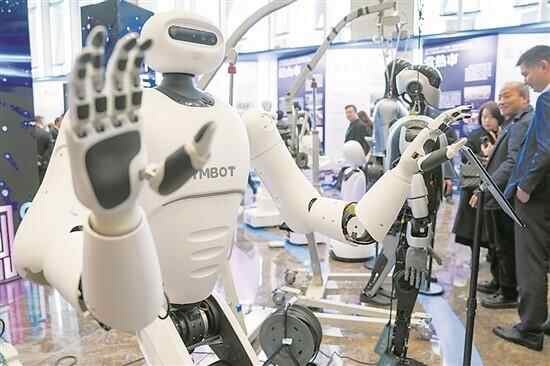
Renting a humanoid robot costs 10,000 yuan per day, but what exactly can they do? The humanoid robot G1 from Unitree Robotics, which captivated audiences with Yangko performance, a rural Chinese folk dance at the Spring Festival Gala, has not only intensified industry discussions on the rapid iteration of humanoid robot technology but also made the commercialization of intelligent technologiesa heated topic.

According to insiders, G1 humanoid robots have become highly sought-after for rentals since their performance at the Gala. A quick scroll through trending posts online reveals the most common applications for these robots, such as delivering rings to brides at weddings, interacting with children in schools, and engaging with guests at exhibitions.
At present, what exactly can humanoid robots do? Multiple rental providers suggest that current functions remain relatively basic, including walking, waving, and nodding. If users want the robot to dance like it did on the Gala stage, secondary development is required. As for the imagined tasks of serving tea or doing housework,some developersindicate that these capabilities are still a step away. Many netizens expressed that while it's fascinating to watch robots run and jump, they are more eager to see them transition from performers to real workers.
With rapid technological advancements and increasing demand for efficiency in production, the humanoid robotics industry is entering a golden age. Globally, tech giants such as Tesla, Amazon, and Dyson have aggressively entered the sector through independent R&D and strategic investments. In China, innovation-oriented enterprises such as Unitree Robotics, AgiBot, and UBTECH are emerging as key players. According to "Markets and Markets", the humanoid robot market is projected to skyrocket to 17.3 billion dollars by 2027.
China is also stepping up policy support for humanoid robots. The 2025 Government Work Report introduced the concept of "Embodied Intelligence" for the first time, signaling a further strategic push for AI and robotics innovation.
On March 3rd,China's tech hub Shenzhen released a new action plan to boost the embodied intelligent robotics sector (2025–2027), aiming for an industrial output exceeding 100 billion yuan (about 14 billion U.S. dollars) by 2027, with 10 new enterprises valued at over 10 billion yuan added.
Notably, Unitree Robotics has already settled in Shenzhen, which is driven not only by policy support but also by the city's dynamic innovation ecosystem, a strong network of robotics startups, and the comprehensive industrial chain of the Pearl River Delta. Industry observers note that this positioning is beneficial for Unitree to establish closer ties with local suppliers, leveraging regional resource advantages to enhance R&D and production efficiency.
Source:Lingnan on the Cloud
人形机器人走进现实 都在忙啥?
租一台人形机器人一天需要一万元,到底可以用来干什么?春晚上扭秧歌的宇树科技人形智能机器人G1火爆,不仅让业内对于人形机器人技术迭代关注进一步升温,更使得智能技术的商业化落地话题成为焦点。
据相关人士透露,随着宇树机器人在春晚的火爆,旗下的人形智能机器人G1租赁十分抢手。顺着网络热帖,就不难刷到当前人形机器人最多出现的场景——给新娘送戒指、去学校跟小朋友互动、在展会上与嘉宾互动。
现阶段,这种人形机器人可以用来做哪些动作?从多个机器人租赁方的表述来看,目前的功能还相对简单,包括行走、招手和点头等基础动作。但如果用户想机器人像在春晚舞台上那样跳舞,还需要进行二次开发。至于网友设想的给人端茶倒水做家务这类任务,有人直言“这是下一个阶段考虑的事情”。对此,有不少网友表示,相比单纯“看热闹”,更期待机器人从“能跑能跳”表演性质转向真正的“能工作”。
随着科技的迅猛进步以及社会生产对效率的极致追求,人形机器人产业正步入黄金发展期。从全球范围来看,近年来,特斯拉、亚马逊、戴森等全球科技巨擘纷纷强势入局,通过自主研发或战略投资的方式,大力押注人形机器人领域。国内,包括宇树科技、智元机器人、优必选等创新企业也崭露头角。根据Markets and Markets的预测,到2027年,人形机器人的市场规模有望飙升至173亿美元。
在中国,人形机器人也不断获得政策加持。2025年政府工作报告首提“具身智能”,标志着我国在人工智能与机器人领域的战略支持进一步升级。
3月3日,深圳发布的《具身智能机器人行动计划(2025—2027年)》明确,到2027年关联产业规模将达1000亿元以上,新增10家估值超百亿企业。
值得留意的是,宇树科技当前已经落子深圳,其背后不仅是政策的支持,更有赖于深圳创新的氛围,志同道合的机器人创业企业以及珠三角完备的产业链。业内人士认为,这一布局有利于宇树科技与当地供应商建立更紧密的合作关系,借助深圳的产业资源优势,提升产品研发和生产效率。
文|记者 戴曼曼
翻译|盛嘉
英文审校|赵凡
-
Vibrant Guangdong|Guangdong's cultural and tourism achievements in 2024
2025-03-08 07:31:55 -
Guangdong Delegation's open day showcases greater openness to journalists
2025-03-08 07:31:55 -
Guangdong Delegation: Guangdong welcomes talents and entrepreneurs
2025-03-08 07:31:55 -
Poster丨Jiexi: cherry blossoms blooming profusely in Springtime
2025-03-07 22:13:16






